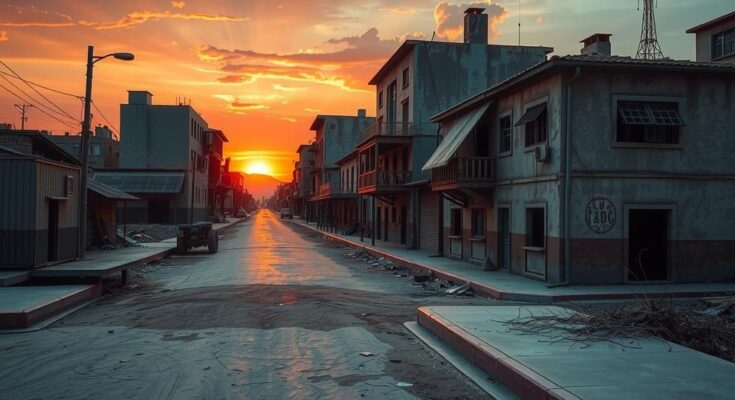Lima, Peru, struggles with water accessibility, primarily affecting impoverished neighborhoods where over 635,000 residents lack running water. Deliveries via tanker trucks are infrequent and unsanitary. The average daily water supply per person is well below UN recommendations. Societal disparities are evident, as illustrated by the stark division created by the so-called “wall of shame” separating affluent areas from the poor. Climate change and insufficient urban planning exacerbate these issues.
In Lima, Peru, accessing running water remains an elusive dream for thousands of residents in impoverished areas. Home to over 10 million people, Lima is one of the world’s largest cities set in a desert, characterized by limited rainfall despite its proximity to the Pacific Ocean and the Andes. Currently, over 635,000 individuals in Lima lack running water, particularly those residing in informal settlements situated in areas unreachable by municipal water lines.
Blue tanker trucks provide water deliveries weekly, yet the quality is questionable, as outlined by Catalina Naupa, a local resident suffering from health issues attributed to unsanitary conditions. During winter, these essential deliveries can be interrupted due to impassable streets, forcing residents to conserve their limited water supplies significantly.
According to Nicolas Reyes from the city’s water utility, families receive approximately 30 liters of water daily, far below the United Nations’ recommended minimum of 50-100 liters. The persistent fear of water rationing looms each rainy season, alongside concerns regarding the long-term impact of climate change on water availability in the region.
Antonio Ioris, a geography professor, stresses that the primary issue is not solely water scarcity but a failure by policymakers to prioritize the needs of the poor. The lack of urban planning exacerbates the challenges faced by residents of Lima’s outskirts, often forcing individuals to migrate from rural areas. In some neighborhoods, residents pay exorbitant prices for basic water access, significantly more than those with utility connections.
A notable physical division exists in Lima, with a concrete barrier dubbed the “wall of shame” separating affluent neighborhoods from impoverished areas like San Juan de Miraflores. This stark contrast highlights the disparity in water accessibility, as those on the affluent side consume nearly 200 liters of water per day, illustrating the glaring inequalities faced by those on the other side of the barrier.
In summary, Lima, Peru, faces a significant water accessibility crisis, particularly affecting its impoverished areas. A vast number of residents rely on infrequent and potentially unsafe water deliveries, while enduring health risks and financial burdens. Climate change and inadequate urban planning exacerbate existing challenges, leading to stark disparities between wealthy and poor neighborhoods. Addressing these inequalities requires urgent attention from policymakers to improve living conditions for the most vulnerable populations.
Original Source: www.france24.com




